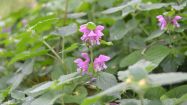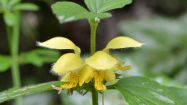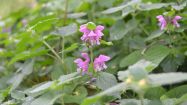The "poggio montano" (mountain hilltop) is an experimental area for the cultivation and ex situ conservation of wild plants from the Apennine regions. Restored at what Professor Fridiano Cavara (director of the Botanical Garden from 1905 to 1929), called the hill of the northern plane tree (a tree felled in 1900), behind the monument to Michele Tenore, it was always intended for the cultivation of plants from mountainous regions or temperate-cold climates. The location, the limestone rockeries, the shade provided by the overhanging tree canopies, and the coolness, maintained by the artificial water circulation system of the adjacent fern garden, make this small area suitable for various mountain species.
Numerous mountain plant species lose their above-ground parts during the unfavorable season and survive solely thanks to modified underground stems (rhizomes, tubers, bulbs). For this reason, cyclamens, snowdrops, primroses, anemones, buttercups, columbines, bellflowers, lilies, and orchids can only be seen in this area for short periods. A visit here is like taking a walk in the mountains without a backpack and hiking boots, staying within the paths of the Botanical Garden of Naples.














 Sistema Museale di Ateneo
Sistema Museale di Ateneo